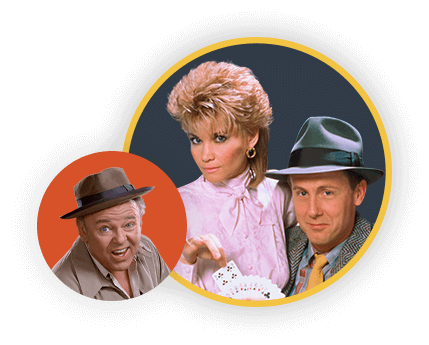This is what it actually took to become a Solid Gold dancer in the Eighties

Image: The Everett Collection
If you were a really good dancer in the 1980s, then there was only one job you really wanted.
You wanted to shake your stuff on Solid Gold, the music variety show that took off where American Bandstand and Soul Train left off, inviting pop acts to play and requiring perfect performances from its famous Solid Gold dancers, whose choreographed routines backed visiting bands lip-syncing to their biggest hits.
According to Anita Mann – the famous choreographer who built her career fashioning unforgettable moves for everyone from Elvis to the Monkees, and went on to cast and choreograph the Solid Gold dancers – in an interview with Archive of American Television, she confirmed that when the show put out a call for a single dancer, hundreds of hopefuls would show up to vie for the spot:
"Those auditions were crazy. One time I needed one girl and 1,500 came. We did it at Griffith Park. It was all shot for TV, I think, and it wasn’t a staged thing, it was just before social media and they would announce it, and it was put everywhere, and I hired one girl and she didn’t last. It was too hard. I mean, 1,500 girls came, and I just needed one, and that’s how hard it was to be a Solid Gold dancer."
So, if you were ever in a park with hundreds of dancers wondering what it would take to tap your toes on the show, Mann finally has some answers for what she was looking for in those auditions – and her top criteria might surprise you. Mann said, "The first thing I look for is attitude. If somebody has a bad attitude, that’s not going to fly. That’s the first thing."
She was so serious about weeding out the bad attitudes, in fact, that she strategically placed herself during auditions to catch every foul move. Mann said, "The first thing I’d do is I'd walk in the room and then I watch every other dancer walk in the room. I’m there first. And I watched the people. I’d see who puts their dance bag down or shoves somebody else’s bag away, and I watched when they’re learning the routine who tries to get in front of somebody else, and I watched all of those things because if you have to live with that person, it makes a difference.”
Once all the attitudes were checked, Mann moved on, "Then the next thing is, obviously, their dancing skill and how quickly they learned the routine." This was key, Mann said, because unlike a stage performance, where she felt she could better work with raw talent, Solid Gold just didn't have time to train any amateurs. “For TV," Mann said, "you can’t take the time to worry if they’re going to get the routine and [do it] clean on camera, because a mistake on camera costs money.”
These slots on the Solid Gold dance team were so coveted, Mann said people rarely quit and only once did she have to let someone go for becoming too big a diva. "What I loved so much was everyone wanted to be [there]," Mann said. "It was the job of the Eighties if you were a really good dancer. But, you know, the girls wore 4-inch heels and had to dance in them, not just walk and go to a party. They had to dance. And the hardest part was memory. I mean, how much could you put into your brain and still dance, and they were beautiful. They were all different-looking, different sizes, different shapes, but really hard job. But the best. They loved it. There wasn’t a problem."
Attitude became so important in casting her dancers, Mann even went so far as to link the positive attitude she sought with the iconic beauty the Solid Gold dancers came to represent in Eighties culture. The choreographer said, "I looked for how long it takes them to learn the routine and obviously their technique, how they perform it, and their face, how they smile. Everyone said, ‘Oh the Solid Gold dancers were so beautiful,’ but they walk in a room and they look the same as everyone else. It’s how they present themselves that they become so beautiful.”





